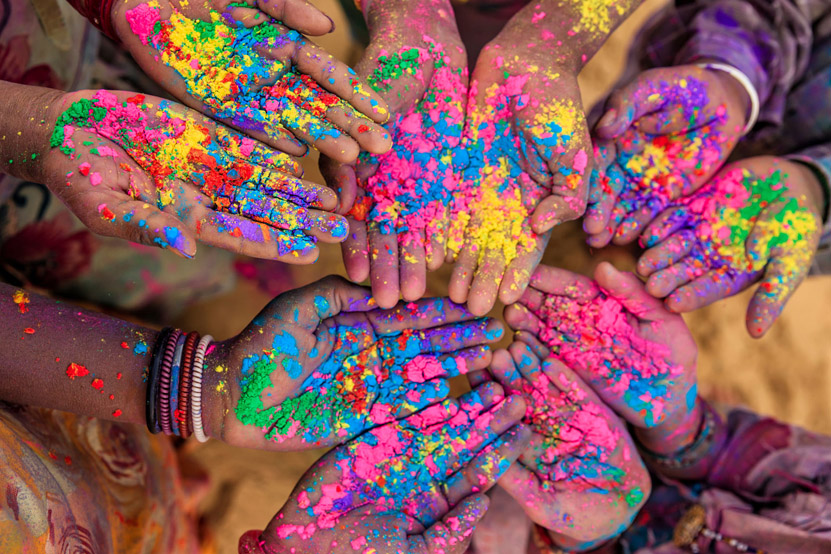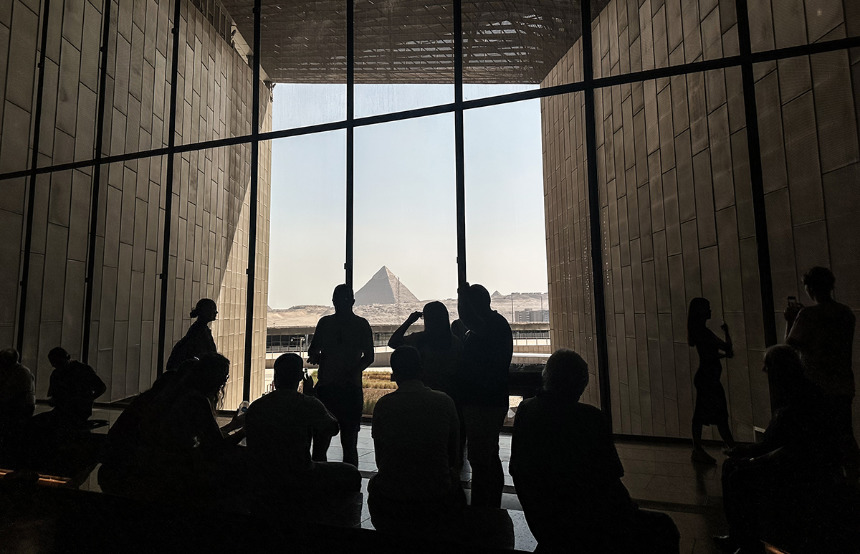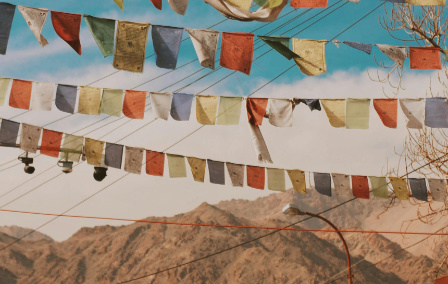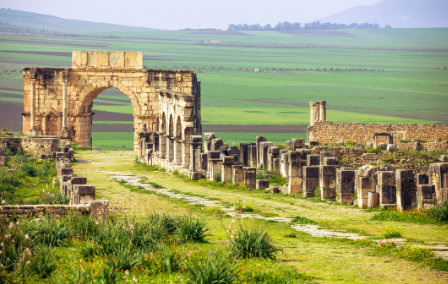
Published 28th Jun. 2021
Reading time
World Religion Day is on Sunday 19th January this year, with the organisers keen to stress the importance of religion and spirituality in unifying humans around the world. They've got a point, because despite a few very obvious on-going (and seemingly implacable) religious rivalries around the world, the vast majority of countries wear their beliefs lightly. Even better, when you come from somewhere so singularly secular as the UK, where a profound sense of spirituality and religious observance might seem a quaint relic of a by-gone age, there's no denying that the places where religion plays a strong role in the local culture tend to be among the most fascinating of all destinations.
Below are just a few destinations and experiences around the world where religious and spiritual beliefs are a profound part of a visitor's experience, and with our superb local guides on hand you are guaranteed to really gain a deeper understanding of how religion plays a role in everyday life.
Ladakh, India (all year round)
In the mountainous Indian region of Ladakh, Tibetan Buddhism still thrives. We can arrange for you to trek through starkly beautiful lunar landscapes between monasteries, much as Buddhist monks - resplendent in their robes - have done for centuries, and to learn about the basic tenets of this remarkable religion. Spend time with monks and priests while your guide explains their ceremonial rituals. We can then arrange a private puja - a wonderfully spiritual ceremony involving incense and prayer flags where offerings are made to Buddha and his Bodhisattvas (those who have become elevated to the highest levels of enlightenment) in order to receive a blessing for a specific issue.
Timkat in Ethiopia (19th - 20th January every year)
Ethiopia practices a quirky (and ancient) form of Christianity, best witnessed in the rock-hewn churches of Lalibela, and the supposed home of the true Ark of the Covenant - Axum. The best evocation of the country's Christian tradition, however, is at the many and varied festivals throughout the year, best of which is Timkat (this Monday!), celebrating Jesus's baptism. We can arrange for you to be at the epicentre of the celebrations, in Gondar, to witness thousands of white-robed worshippers process to a holy pool for a ceremony before hundreds of boys jump in. Read our own Amelia Stewart's account here.
Holi in India (usually March every year)
One of the most iconic (and photographed) religious festivals in the world, Holi celebrates the end of winter and the coming of spring and - with luck - a successful harvest later in the year. The centerpiece is the (very) liberal throwing of brightly coloured powders - once all entirely natural, but less often so now, sadly - so that eventually everyone and every building ends up a riot of colour. It's all extremely good fun, and children in particularly will love being there for the experience.
Pilgrimage Trails in Japan (year round)
There are several key festivals and temples dedicated to Shintoism, the state religion of Japan, but in keeping with the religion's admirable reverence for the natural world, and man's position within it, we think the most spiritual experience you can have in Japan is to walk one of the wonderful pilgrimage trails that criss-cross this island nation. Key among these is the Kumano Kodo Trail in the Kansai region of the main island of Honshu. This UNESCO-recognised thousand-year-old trail was once for use exclusively by emperors and aristocrats, but today represents a wonderful walk through beautiful ancient woodland, with the ability to stop and pay respects at the many shrines along the route. The smaller, less-visited island of Shikoku is also home to several lovely, long range pilgrimage walks, and we can provide guides to help explain the significance of the places you pass en route.
Malta/Gozo Patron Saint's Days (throughout the year, mainly in summer)
Barely a week goes past, particularly in summer, without one or other village on the sister islands of Malta and Gozo celebrating their patron saint's day. Cue extremely fun processions through the streets, a host of medieval era pageantry and, come sundown, spectacular firework displays.
Santa Semana (Holy Week) in Seville (March or April every year)
On the subject of processions, these are taken to new heights on the streets of Seville during the week leading up to Easter with the city's various religious brotherhoods, dressed in habits and - often - pointed hoods (the men) and lace mantilla (the women), and carrying floats on which stand figures - some hundreds of years old - representing characters or scenes from the life of Jesus. It's very formal and very moving, but can be a long haul. We can tell you the best places to watch the action, and where to eat the best tapas come evening.
Day of the Dead, Mexico (1st - 2nd November every year)
Across Mexico, Guatemala and the rest of Central America, pre-Columbian religious beliefs have become wedded to the Catholicism imposed on the population by the Spanish Conquistadors, and the synthesis of these religions is a bewitching spectacle during Santa Semana (Holy Week) in places like Antigua in Guatemala, but the ultimate manifestation is Day of the Dead, celebrated across Mexico but most spectacularly in Oaxaca, the country's cultural capital. The festival is premised on the Mayan-era belief that no ancestor is truly dead until their last descendant forgets them. Visit a cemetery during Day of the Dead and you will find families sitting beside their departed loved ones' graves, toasting their absence and gossiping to them about life among the living.
Peru - Inti Raymi, Cusco, Peru (June 20th or 21st each year)
The southern hemisphere winter solstice hails this festival dedicated to the Inca Sun god Inti. Learn how, in less faint-hearted times, up to 200 llamas were offed in an orgy of sacrifice and worship when the head honchos of the Inca Empire would gather and nod approvingly at a parade of cloth-bound mummies that were exhumed from local temples. Thankfully it has all calmed down a little these days, but it's still a truly exceptional and thoroughly authentic celebration of the sun, complete with coca leaf reading, regal parades and - mercifully - only one poor llama meeting its maker.
Rio Carnival (ends on Ash Wednesday)
Scenes of sexy samba dancers might dominate, but it's worth remembering that at heart the Rio Carnival, like so many others, is actually a religious celebration; in this case the Christian concept of epiphany, but bizarrely the Rio Carnival also began as a celebration of the Roman God of winemaking and fertility, Bacchus (Dionysus in Greek). Quite how this came to be the case in a 17th century festival in Latin America is lost in the mists of time, but the locals still know how to put on a Bacchanalian affair, and we can arrange a carnival experience to remember.
The Tsolido Hills, Botswana
The ancient San people have lived in the Tsodilo Hills region of Botswana for more than 20,000 years, developing a deep intimacy with, and understanding of, the region. The hills of the name are four huge monoliths that the San believe house the spirits of their ancestors, with each monolith individually identified as Male Hill, First Wife Hill, Female Hill and Child Hill respectively. The four hills are covered in literally thousands of petroglyphs and rock paintings and in the company of our superb guide you can learn about the significance of the key paintings, the basic tenets of the San's belief system, and how they use shamans to communicate with their ancestors. It's a fascinating insight into a 'religion' far older than the world's major religions.
Jerusalem, Israel & the West Bank
Last but not least, anyone with even a passing interest in the shared and entwined histories of the three major monotheistic religions has to visit Jerusalem. The Old Town of this beguiling and extraordinary city is surprisingly small but warrants at least a couple of days exploration, in the company of a private guide who has spent years studying Jerusalem's history (and histrionics). Explore the Christian Quarter, centred on the Church of the Holy Sepulchre - the enormous church built over both the crucifixion site and Jesus's tomb - and learn how the warring Christian orders have far from practiced what they've preached over the centuries in the battle for dominance of the building. Then amble through the alleyways of the Muslim Quarter through bazaars and past coffee shops that feel unchanged in centuries. Finally, witness the daily devotion of Jewish worshippers praying at the Wailing Wall, the only part of the original Temple of Solomon that they can access, while above them on the Temple Mount, the golden Dome of the Rock - one of the holiest sites in Islam, glistens. It's a powerful and profound experience, and one everyone should consider.
Practical advice and inspiration for your next trip

As Tom Holland (the esteemed historian, not Spiderman) so succinctly put it in the first edition of our magazine, Original Traveller, ‘Egypt is where tourism began’. And the next chapter in the history of tourism in Egypt is about to begin. We’re always looking for a reason to shout about this captivating country, and this November, we have the perfect excuse: the long-awaited opening of the Grand Egyptian Museum (GEM).
3rd November 2025 - Egypt Culture

Everyday life can be chaotic. Our favourite antidote? Escaping to one of the silent and sacred corners of the world. Whether hiking mystical mountains or observing ancient rituals, spiritual holidays offer a chance to reconnect and slow down. From the cloud-kissing monasteries of Meteora to the heart of Mexico’s Maya culture, read on to discover our favourite spiritual escapes around the world... Meteora monasteries, Greece Himalayas, India Yucatan Peninsula, Mexico Nairobi and Laikipia, Kenya Meteora monasteries, Greece Best for:
24th July 2025 - Culture

Any trip to Fes should include a day out to the Roman ruins of Volubilis, probably the largest and best-preserved ruins in Morocco. With scenery reminiscent of Russell Crowe’s homecoming in ‘Gladiator’ (more for the surrounding countryside than for the grisly welcome he got), Volubilis is a must-see for history buffs and lovers of picturesque vistas alike. Find out why you should visit in our Volubilis guide… 1.
23rd April 2025 - Morocco Culture

Our team of destination experts will get to know you and your unique requirements for your holiday

We work with you to build an ultra-personalised holiday itinerary with your choice of accommodation, experiences and activities

All of our holidays include little extras designed to make a big difference to your trip, from fast-tracking you through airport check-in and security to our network of local Concierges